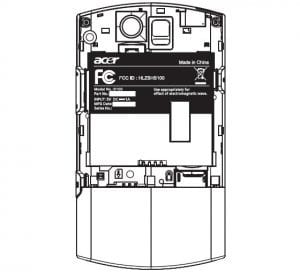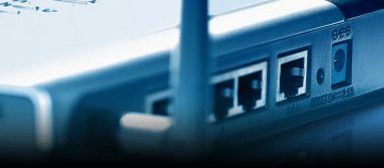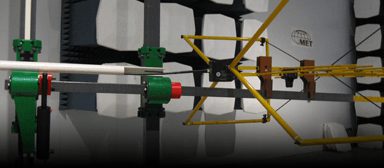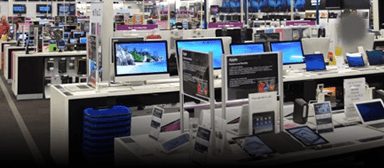6 Steps to Successful FCC Testing & Certification of Electrical Products
Electrical/electronic equipment manufacturers planning to sell their products in the United States must ensure that their equipment won’t electromagnetically interfere with other products or cause harm to the public. The Federal Communications Commission (FCC) oversees and enforces this requirement, per Title 47 of CFR.
 Most products that can emit radio frequency energy need to be tested and certified to be marketed or sold in the U.S. The best rule of thumb is that any electronics device with the ability to oscillate above 9 kHz must get an FCC authorization, but there are exceptions. When manufacturers sell equipment without the appropriate approval, they can be fined and could have their products and profits seized.
Most products that can emit radio frequency energy need to be tested and certified to be marketed or sold in the U.S. The best rule of thumb is that any electronics device with the ability to oscillate above 9 kHz must get an FCC authorization, but there are exceptions. When manufacturers sell equipment without the appropriate approval, they can be fined and could have their products and profits seized.
Products that need authorization are either intentional or unintentional radiators of radio frequency energy. Intentional radiators are devices – like a smartphone – that must broadcast radio energy as part of their operation. Unintentional radiators are electronics – like a digital camera – that can create radio signals and broadcast them through space or power lines, as an unintentional byproduct of their operation.
Digital devices are broken down into two testing classes: Class A and Class B. Class A covers devices that are used primarily in industrial, commercial and engineering settings. Class B is reserved for consumer devices and it has stricter limits.
The FCC authorization process is begun once your product is ready to be mass-produced and sold to consumers. Your device is tested to see if it may cause interference with other equipment, broadcasts in the correct radio frequency range, and meets other telecommunications requirements.
The FCC has three options for authorization:
- Verification
- Declaration of Conformity
- Certification
Verification
This procedure is used for Part 15 digital devices that either do not contain a radio, or that contain a radio that has been preapproved and is being integrated within the guidelines set forth in its grant of authorization. These devices can be tested by the manufacturer or laboratory to see how much radio frequency energy is radiated by the device. When these devices are found to be compliant, they can be marketed and sold without FCC approval. An example of a device that may only require verification is a TV receiver.
Declaration of Conformity
This stricter procedure is typically required for Part 18 devices, or devices that are considered a personal computer or personal computer peripherals. It requires an accredited laboratory like Eurofins MET Labs to measure radio frequency energy from your device to ensure that it meets relevant technical standards. A compliant product features the FCC logo on its label.
Certification
The most stringent authorization is FCC certification. This procedure is for equipment that is most likely to interfere with other equipment, signals, and emergency information. FCC Certifications are issued by Telecommunication Certification Bodies (TCBs) like Eurofins MET Labs. A compliant product features an FCC ID on its label.
Obtaining FCC certification is straightforward if you are careful and take it step by step.
Step 1: Select Radio Frequency and Design Equipment
Start by learning about what frequencies are legally open to you and your equipment by referencing the FCC’s current guidelines on radio spectrum allocation. Factors you’ll want to consider: radio range, propagation, size, power consumption, and optimization.
Step 2: Test During Development
As the product is being developed, perform as many ‘pre-compliance’ tests in-house as you can, or utilize a 3rd party lab like Eurofins MET Labs. These tests don’t ‘count,’ but they ensure that there won’t be any major (read: expensive) surprises later on.
Step 3: Register with FCC
You need a free FCC Registration Number (FRN) if you want to obtain certification authorizations for devices that use the radio spectrum. Go to the FCC’s CORES page to provide your business address and contact information. You’ll get a FRN and the ability to request a mandatory grantee code (nominal fees apply).
Step 4: Select Test Lab
Once you have your FRN and grantee codes, it’s time to contact an FCC-registered testing facility. Your lab partner should be experienced, responsive, and able to handle all of your testing needs. Lab quality, testing facilities, and capabilities can vary significantly, so we recommend working with Eurofins MET Labs, the responsive choice for FCC testing and certification.
Step 5: Compliance Test
Deliver a production-ready prototype and its technical specifications to your lab partner. You might want to have a representative witness the tests, but it is not necessary. Testing can run from a couple days to a couple weeks, depending on product complexity.
Step 6: Certification & Filing
After completing testing successfully, a TCB will review the test documentation and issue your certification on behalf of the FCC. Once the TCB uploads your information to the FCC database, the FCC will list your product on its approved list. The TCB will send you a Grant of Equipment Authorization, which allows you to legally market and sell your product in the U.S.
Have questions about the FCC authorization process or requirements? Ask Pat, our electrical testing compliance expert.
Eurofins MET Labs is accredited for both FCC testing and FCC certification, and deeply experienced in RF approvals for global market access.







